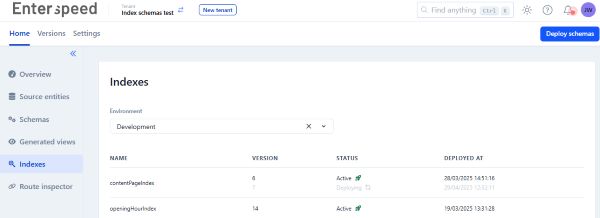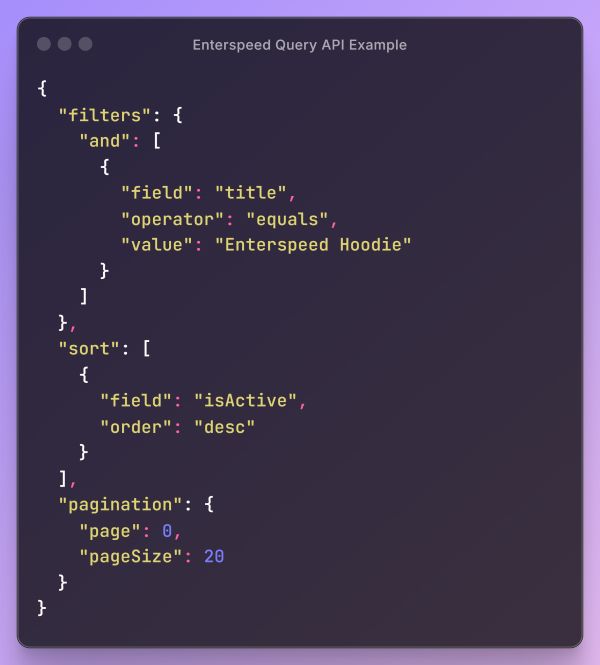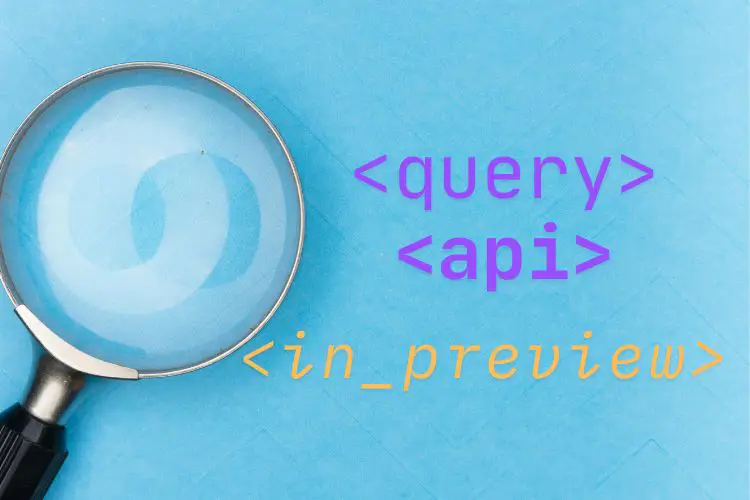It has just become 100 times easier to fetch data from Enterspeed. Today, we are opening a public preview of the Enterspeed Query API. With the Query API, you can create dynamic queries on the data you have in Enterspeed.
You can use the Query API to create product list pages, article lists, or whatever list you want. You can also use the Query API to look up specific customers' orders or events within specific date ranges and locations. The Query API is a generalised search index that allows for filtering on each property defined in the index. The indexable properties are fully managed by you as a developer.
The Enterspeed Query API builds upon the Enterspeed you already know. Data is sent to Enterspeed via the Ingest API, and you use the JavaScript-powered transformation engine to transform the data. We are introducing two new concepts today. The first is the Index Schema where you define and manage the searchable properties and secondly we have the Query API itself.
Introducing the index schema
An Index Schema works almost the same as a normal schema. Below is an example:

The trigger and properties methods are almost as you know them – with a couple of limitations, but we will get back to that later. The new index method is an explicit definition of the fields of the item that is added to the index. Each Index Schema represents its own underlying index, actually it is one for each deployed version of the schema. When you change index definition and deploys a new version of an Index Schema, Enterspeed handles creation of a new index in the background and automatically activates and when the data is ready.

And the Query API
The Query API is a new endpoint in the Enterspeed ecosystem: query.enterspeed.com/. The Query API supports filtering, sorting, and pagination. It is possible to filter on the fields defined in the Index Schema, and various operators such as equals and greaterThan are available, which can be nested with and and or. Read more in the Query API documentation and see a small example:

What to come beyond this preview
We mentioned that the properties method works "almost" as you are used to. We have currently removed the PropertiesContext object, so it's not possible to use lookups, partials, or references. We're working on how we can best introduce the functionality in a later release. An other item on the roadmap is bringing the Query API and Delivery API closer together,
We're also working on bringing support for facets to the Query API, so stay tuned for news about this feature before the summer hits.
Want to learn more or try it out?
If you want to learn more about the Query API, you can visit our documentation for the Index Schemas and the Query API. You are, of course, also more than welcome to reach out on any of our channels.
We'd love it if you want to try out this feature! So please reach out and we'll activate the feature and give you a 1:1 introduction.

20 years of experience with web technology and software engineering. Loves candy, cake, and coaching soccer.

